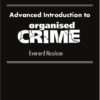East Asia has again become a top priority for America following a decade of preoccupation with terrorism. Much has changed: China is now an economic, technological and military power second only to the United States. This ascendance poses new challenges for U.S. friends and interests in the region and raises the strategic stakes for the United States. Since the founding of the People’s Republic of China, US–China relations have developed by twists and turns. Tying up with the changing post-war international situation, the development passed through different stages each covering roughly a decade. From the late 1940s to the late 1950s was a period of confrontation between the “two world camps.” Throughout this period, China was blockaded, besieged and looked upon with enmity. Relations between the two countries have generally been stable with some periods of open conflict, most notably during the Korean War and the Vietnam War. Currently, China and the United States have mutual political, economic, and security interests, including, but not limited to, the prevention of terrorism and the proliferation of nuclear weapons, while there are unresolved concerns relating to the role of democracy in government in China and human rights in both respective countries. China is the second largest foreign creditor of the United States behind Japan. The two countries remain in dispute over territorial issues in the South China Sea. The United States is a superpower, and China is becoming one. But this does not make cold war, much less hot war, predictable. Rather, it gives both a special responsibility to manage judiciously their power to cause grave harm not only to each other but also to the region and the world.
This Handbook explores the rapidly evolving and increasingly multifaceted relations between China and United States. The Handbook, comprising chapters contributed by numerous experts in the field, will prove invaluable to students of international affairs, academics, researchers, businesspeople and policy analysts.










